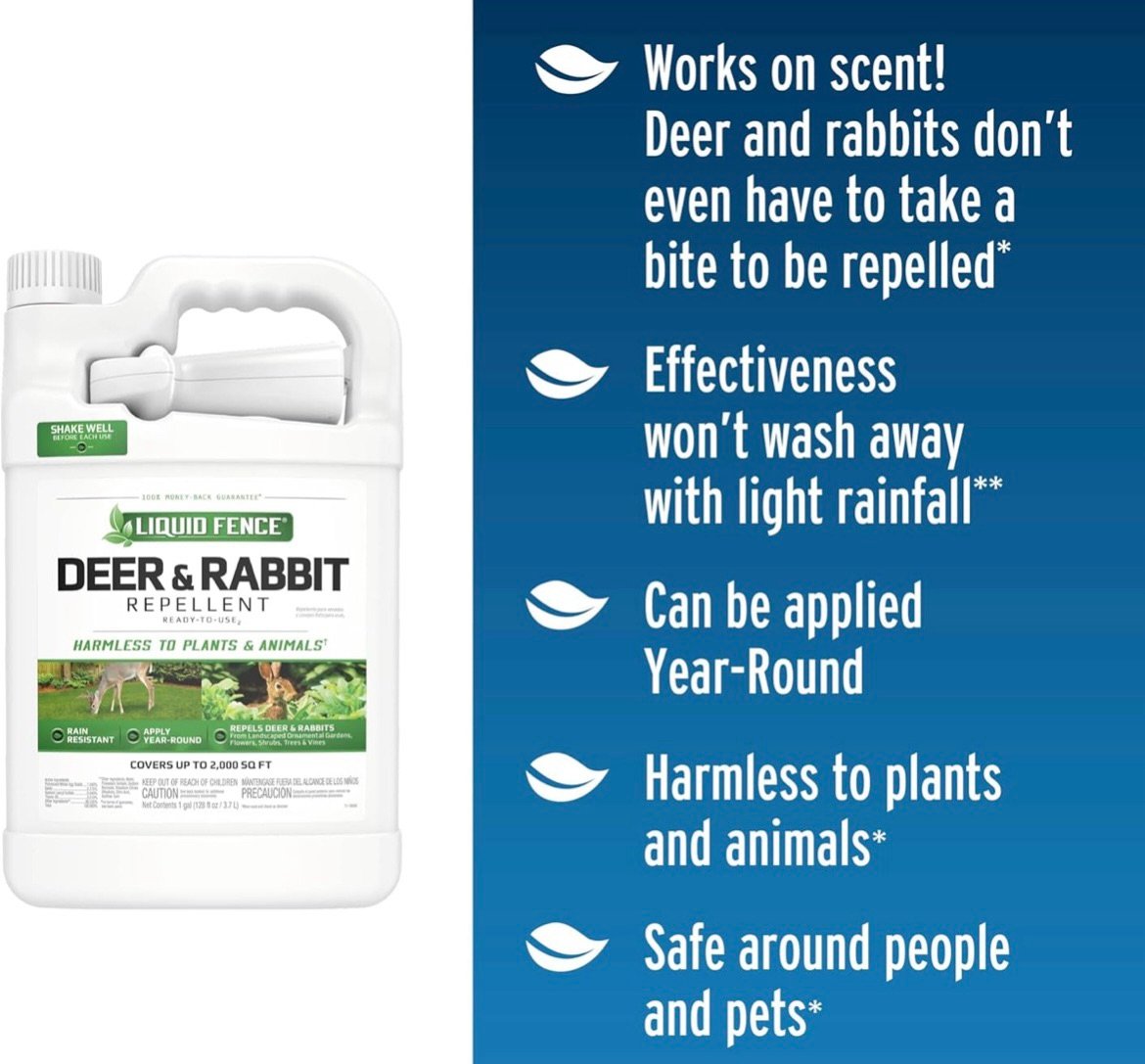
Do Deer Eat Tomatoes Off the Vine? Unfortunately, yes!
If you’ve ever walked out to your garden and noticed missing tomatoes with bite marks or plants mysteriously stripped overnight, there’s a good chance deer are the culprits. So yes—deer absolutely eat tomatoes off the vine, and they don’t hold back when they’re hungry.
But don’t worry—I’ve got practical, tested solutions that actually work (not just garden forum guesses). In this post, I’ll share why deer target tomato plants, the signs of deer damage, and the best ways to keep deer out of your tomato garden for good.
Why Do Deer Love Tomato Plants So Much?
Deer are browsers, which means they eat a little bit of everything—and tomato plants are like a buffet to them. The leaves are tender, the vines are easy to chew, and the fruit is juicy and full of water. On hot days, they’ll bite right into green or ripening tomatoes to quench their thirst.
Tomatoes aren’t their favorite food, but when food is scarce, they’ll happily munch on them. This usually happens more in late summer or during droughts when other food sources run low.

Signs Deer Are Eating Your Tomatoes (And Not Bugs or Other Animals)
If you’re unsure what’s stealing your tomatoes, here’s how to spot deer damage:
- Clean bites on fruit or leaves (usually about chest-height)
- Missing leaves or stripped stems
- Hoof prints in the soil around your garden
- Scat (droppings) nearby—usually pellet-shaped
- Damage overnight, since deer are mostly nocturnal
Unlike smaller pests like hornworms or rabbits, deer leave behind a bigger mess and can wipe out entire plants overnight.
When Are Deer Most Likely to Eat Tomato Plants?
Deer usually strike at dawn or after sunset, especially during hot summer months. They’re smart and sneaky—you won’t usually catch them in the act, but the damage will be there in the morning.
They’re most active:
- In late summer or early fall, when other food sources dwindle
- During droughts
- In areas where they’ve become comfortable due to lack of human activity
If your garden isn’t fenced or protected, they can and will treat it like their local salad bar.

What Can You Do to Stop Deer From Eating Your Tomato Plants?
There are a few tried-and-true ways to keep deer away from your tomato patch, and I recommend using a mix of methods to get the best results:
- Use a proven repellent like Liquid Fence that actually works without harming your plants
- Install tall fencing (at least 7-8 feet)
- Motion-activated lights or sprinklers
- Grow strong-smelling companion plants like marigolds, garlic, or onions around the edges
I personally found that pairing Liquid Fence with some visual barriers (like garden netting) helped protect my tomato plants through the entire season.
The Best Deer Repellent That Actually Works
Out of all the sprays and gadgets out there, the Liquid Fence Deer and Rabbit Repellent has been one of the few products I’ve personally used that made a noticeable difference. It’s safe for edible plants, long-lasting, and smells strong enough to confuse a deer’s sensitive nose. They hate the smell—and that’s the point.
If you’re serious about protecting your garden, check out 👉 this full write-up on the best deer repellent for plants that actually works. That guide explains exactly how and when to use it so your tomatoes stay untouched all season.
Can Tomato Plants Grow Back After Deer Eat Them?
Yes—but it depends how much damage has been done. If only the tops or a few leaves were chewed, your tomato plant can bounce back with some water, fertilizer, and sunshine. But if the main stem is broken or stripped bare, recovery is unlikely.
Here’s what to do if your plant’s been hit:
- Prune damaged branches to encourage new growth
- Give it a good watering
- Apply a gentle tomato fertilizer to kickstart the healing (we reviewed some great ones right here)
- Add protection right away so it doesn’t happen again

Do Deer Prefer Green or Ripe Tomatoes?
Surprisingly, deer don’t seem to care. When they’re hungry or thirsty, they’ll eat both green and red tomatoes—especially ones that are close to ripening since they’re softer and more fragrant. I’ve even seen half-eaten green ones left behind, like they took a bite and changed their mind.
If you want to save your best tomatoes, pick them early in the morning when they’ve just turned from green to blush red, and let them ripen indoors. Here’s when I do it: Best time to pick tomatoes
Other Pests That Might Be Damaging Your Tomatoes
Before blaming deer, keep in mind a few other common garden invaders can look similar:
- Hornworms – Leave large bites and droppings on leaves and stems. Here’s how to get rid of hornworms naturally
- Squirrels or raccoons – These guys go for the fruit too but often leave the rest of the plant alone
- Aphids and mites – Tiny bugs that weaken plants over time. In that case, check out our review of the best insecticidal soap for tomato pests
Signs That a Deer Has Been in Your Garden
Woke up to half-eaten tomatoes and crushed stems? You might be dealing with a hungry visitor. Here’s how to know it was a deer:
- Hoof prints – Look for split-heart-shaped tracks around the garden.
- Clean bites – Unlike insects, deer take big, clean chomps out of fruit and leaves.
- Trampled plants – Their size alone means you’ll often see damaged vines and stems from walking through rows.
- Scattered droppings – Deer droppings look like small black pellets in loose piles.
If you spot any of these signs, it’s time to take action—fast.

Simple Barriers That Deter Deer Without Ugly Fencing
You don’t have to turn your garden into Fort Knox. Here are some easy, low-visual-impact ways to stop deer from coming back:
- Fishing line fencing – Run clear fishing line about 3 feet and 5 feet high around your tomato patch. Deer can’t see it, and it spooks them.
- Hanging reflective items – Old CDs, foil pie pans, or garden mirrors can make them uneasy.
- Motion-activated lights or sprinklers – The sudden movement keeps them guessing and avoids the need for tall fencing.
If you’re dealing with regular nighttime visits, combining these methods with a strong scent-based repellent like this oneworks wonders.
Can Companion Plants Keep Deer Away?
Yep, and this is one of the most natural, budget-friendly tricks in the book.
Certain plants have strong scents deer hate. Try planting these around the edges of your tomato patch:
- Marigolds – They look good and smell bad (to deer).
- Garlic or onions – Pungent and powerful.
- Lavender and rosemary – Great for your kitchen and for deer defense.
They’re not foolproof, but they create a natural barrier—and work best alongside other protection methods.

Stop the Tomato Theft Before It Starts
Deer love tomatoes. That’s a fact. But now that you know what signs to watch for, what tools to use, and which plants to grow as backup, your tomatoes have a fighting chance this season.
If you want the easiest, proven solution, I always recommend going with a top-rated repellent like the one I use. You can learn more in this full breakdown of the 👉 best deer repellent for tomato plants.
Keep those tomato vines safe, and don’t let deer make off with your harvest again. You’ve worked too hard for that!
As an Amazon Associate we earn from qualifying purchases through some links in our articles.


